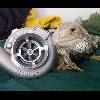Uprating Rb Bottom Ends
Announcements
-
Similar Content
-
Latest Posts
-
Hi @Chupapy i had several leaks from coolant pipes being corroded, i also had one leak on back of the head onto transmission. For me that leak was from the turbo water line. Follow the line to the back of the head The hose and metal pipe had perished these are the best pics I took of it at the time
-
Hey mate, do you have any photos of your coolant leak? Im having this issue on mine leaking at the transmission housing
-
Hey all, Have found a leak coming under the transmission housing. Can see coolant leak from around the firewall but cant see exactly where its coming from. Has anyone had this happen? Car is a r33 gtr.
-
Yea look luddnem is a go kart track pretending to be a race track
-
jesus, top speed of 138, you might as well be doing Targa Tas under the new rules
-







Recommended Posts
Create an account or sign in to comment
You need to be a member in order to leave a comment
Create an account
Sign up for a new account in our community. It's easy!
Register a new accountSign in
Already have an account? Sign in here.
Sign In Now